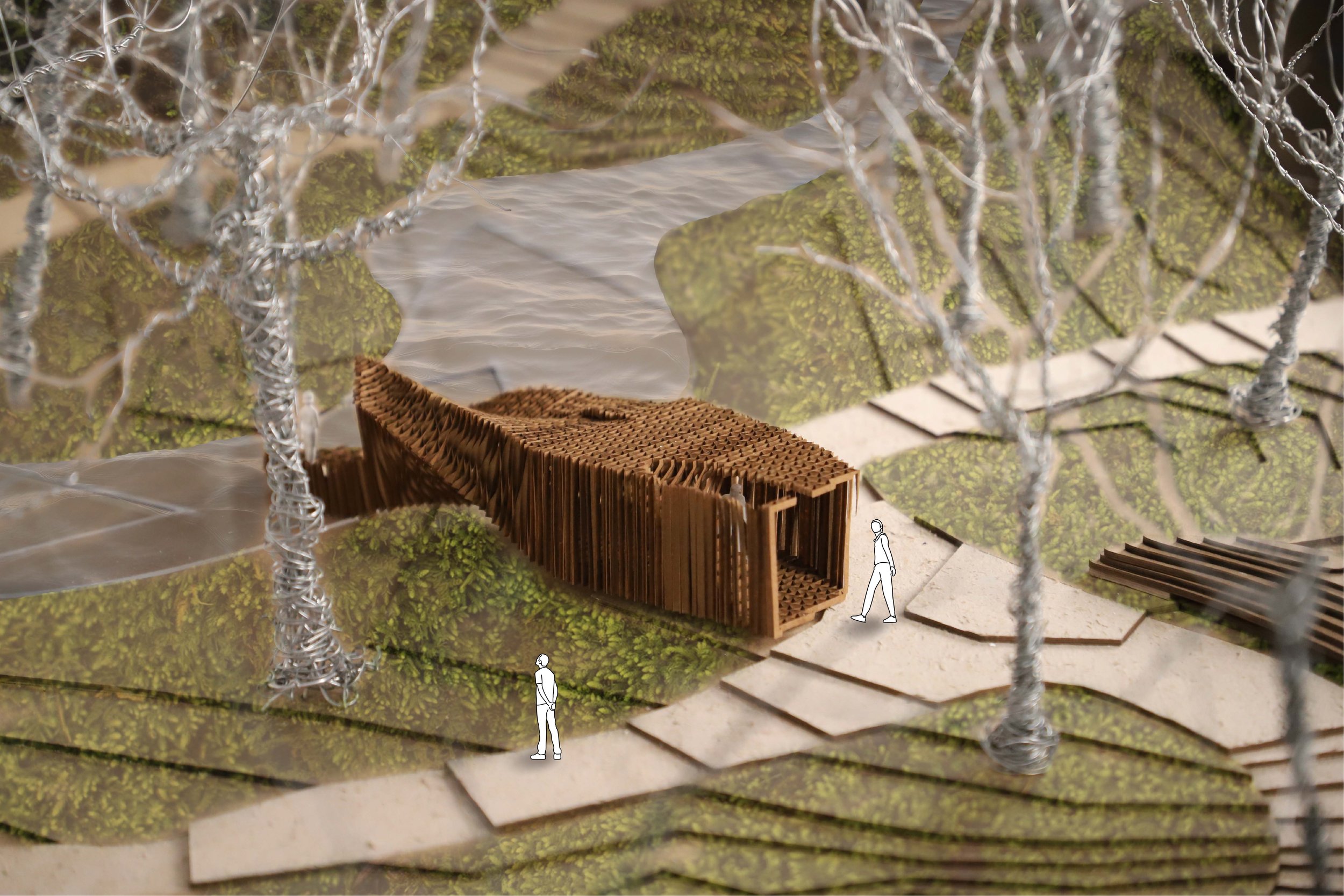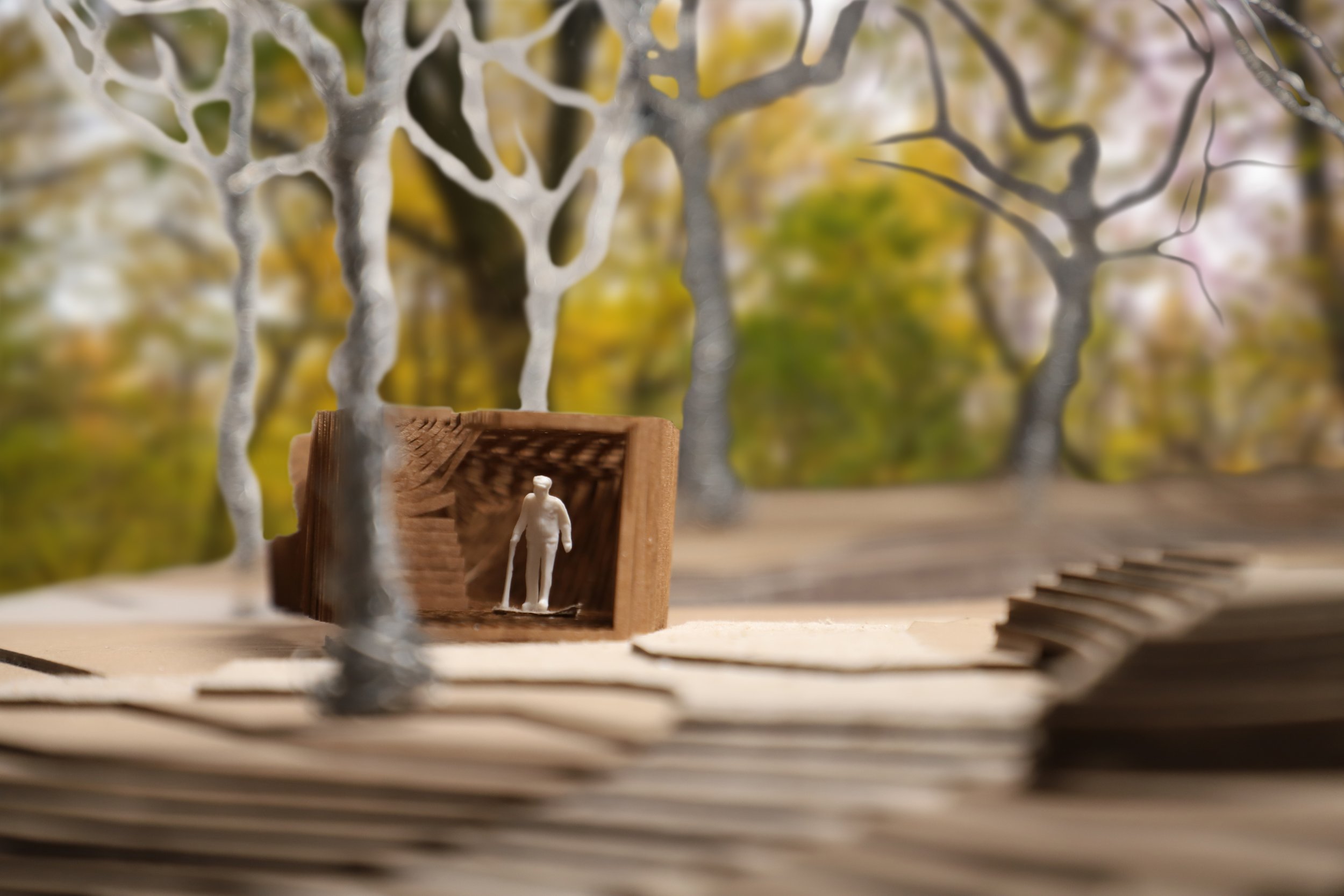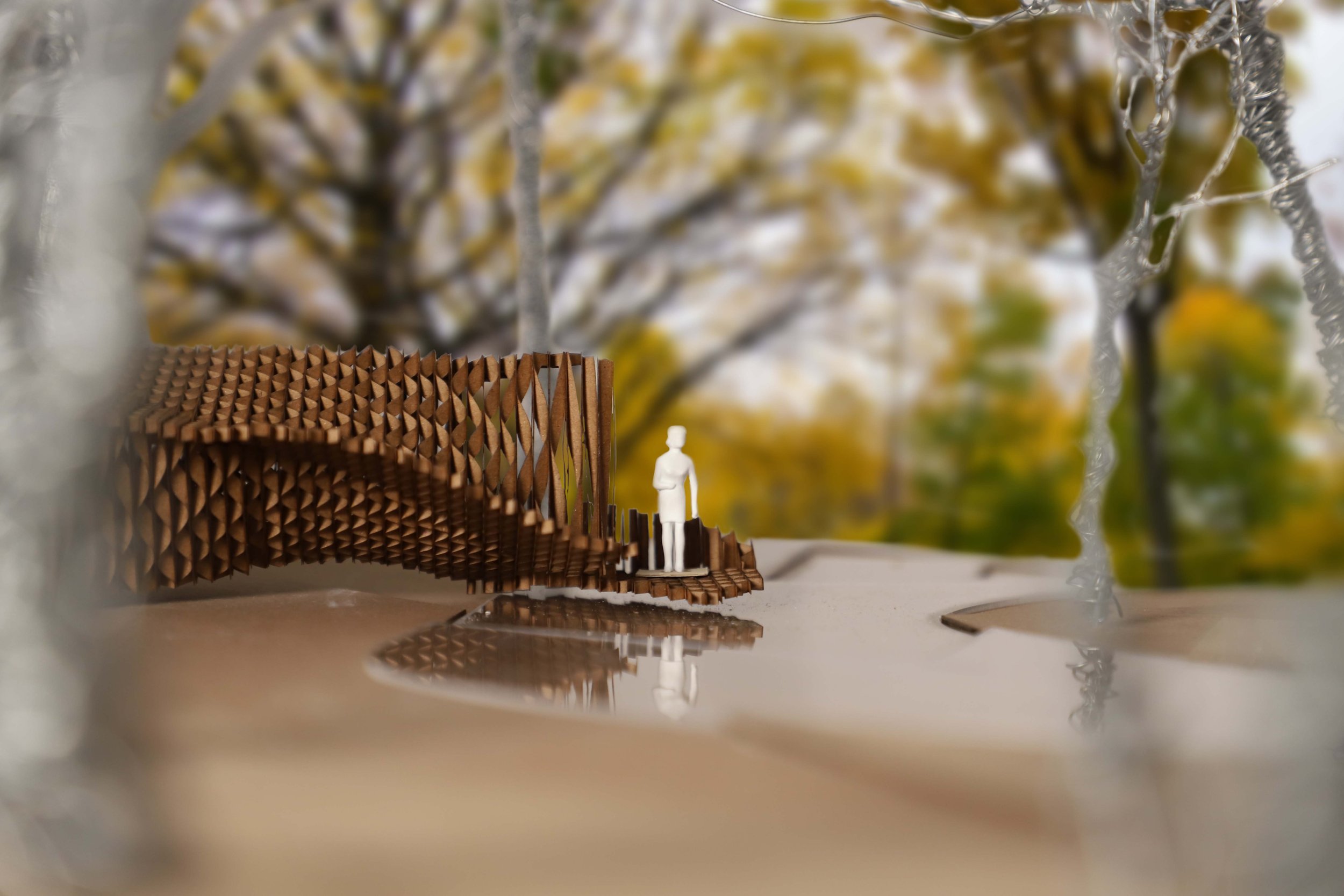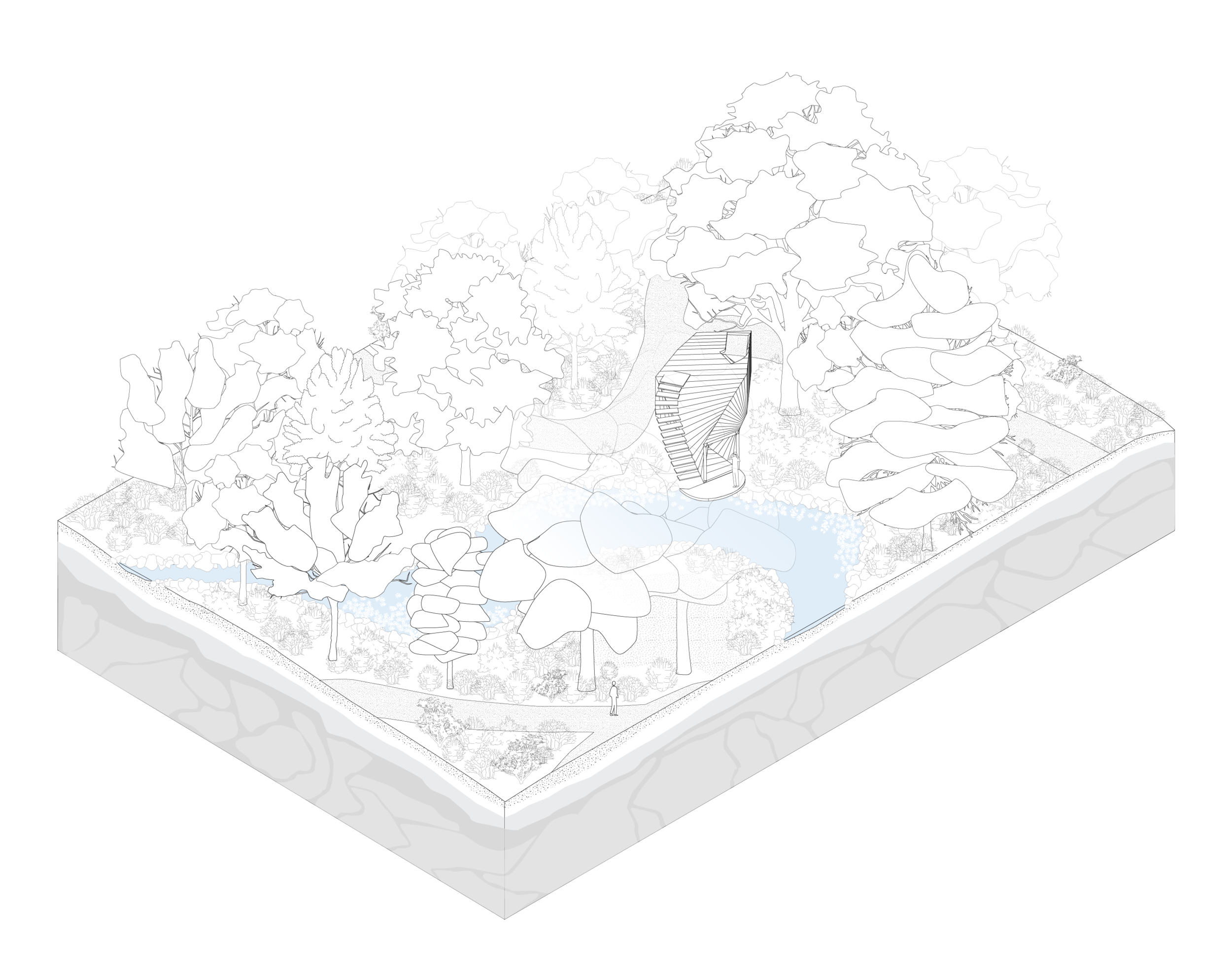Pluriverse: Archiscape
With a sensitivity toward the site and its nonhuman inhabitants established during the Mindscape and Landscape phases of this project, it was time to turn my attention to the human experience. This required an examination of the past. The Ramble’s history is marked by displacement: the Lenape, Seneca Village residents, gay cruisers, and modern victims of racism. These groups have left traces of their fraught histories in a place designed to instill peace withinin a chaotic city.
Since these histories tend to remain hidden, what if an architectural intervention made them tangible and legible to today’s visitors?
The proposed structure seeks to accomplish this through its enmeshment with the site’s natural rhythms. It descends along its length from the path to the stream: in anticipation of hotter, wetter summers, it is meant to tolerate flooding. Higher water levels block access and interrupt the desired movement of visitors, drawing attention not only to the human history of displacement, but also to the natural systems that govern humans and nonhumans alike.
Meanwhile, the structure captures dead leaf matter in the stream, facilitating the growth of aquatic fungi. These fungi are critical to sending energy to the upper echelons of the immediate food chain and beyond. Meanwhile the leaves they inhabit and process provide vital protection to many species, such as the musk turtle.
By engaging with natural processes in a way that speaks to the complicated human dynamics that unfurl in the Ramble, the proposed intervention begins to chip away at society’s nature-culture bifurcation as it unearths the processes that bind the human and nonhuman.



With its twisting form the proposed intervention guides visitors through an immersive experience of the immediate landscape: a deck area allows direct access to the stream while the upper level lifts visitors into the recesses of the soaring canopy.
As the water level of the stream rises, human access to the deck area of the structure is limited. Movement throughout the structure is disrupted as well, as demonstrated in the top three illustrations.
Examining just one species in the Ramble--the musk turtle, for example--revealed its reliance on a web of interactions that involves many other species. Moreover, it became clear that this enmeshment of species within a place is required in order to sustain a thriving ecosystem. The intervention’s design and placement are intended to cohere with the complexity of these relationships.
The supportive structures beneath the intervention’s deck mimic the stems of the lizard’s tail plant. They facilitate the collection of dead leaves throughout the year. The musk turtle benefits from this process in the short and long term: more leaves provide shelter from predators, and their decomposition over time by aquatic fungi offers a vital source of food for the lower rungs of the food chain.
Nematodes feed on organic materials processed by the fungi. Their eggs often fall prey to mosquitos. In one study that observed 109 aquatic insects, 66% of specimens had traces of aquatic fungi species in their foregut. As these same insects offer important nourishment to the many migrating birds that pass through the Ramble, we see how just one community of organisms plays a critical role within a vast, far reaching system.
———
While the intervention allows people to explore and experience the Ramble from various stunning vantage points, it does not necessarily privilege the human experience. Its permeable nature allows the systems contained in the stream to shift along with the fluctuating water level and periodically occupy the structure itself. As nature overflows its human-set boundaries, visitors may begin to experience displacement as they try to navigate the structure. For once, displacement in the Ramble is not inflicted by another human.




